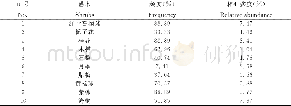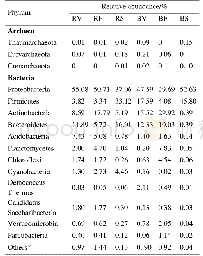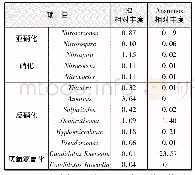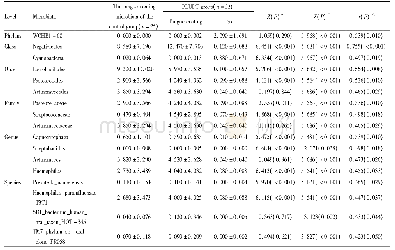《Table 3–Relative abundance OTUs within the genus Nitrosomonas in the two reactors.》
 提示:宽带有限、当前游客访问压缩模式
提示:宽带有限、当前游客访问压缩模式
本系列图表出处文件名:随高清版一同展现
《Nitrifiers activity and community characteristics under stress conditions in partial nitrification systems treating ammonium-rich wastewater》
The summary of the Illumina sequencing data is shown in Table 2.The Chao1,Shannon and Simpson reciprocal indices showed that the diversity of microbial communities was higher in SBRLthan in SBRH.It implied that the concentration of multiple stressors might lower the microbial diversity.Figure 4 shows the phylum-and class-level distribution of microbial community structure based on 16S r RNA gene sequence libraries of SBRHand SBRL.The phyla Proteobacteria(relative abundance:54.9%)and Chloroflexi(31.0%)were dominant in SBRH,whereas activated sludge in SBRLwas dominated by Proteobacteria(29.9%),Chloroflexi(22.1%)and Bacteroidetes(16.7%).Generally,Bacteroidetes are considered as efficient degraders of organic matters with high molecular weights,such as polysaccharides and proteins(Cottrell and Kirchman,2000).In the phylum Proteobacteria,Betaproteobacteria(46.0%)was the dominant class in SBRH,while Betaproteobacteria(14.2%)and Alphaproteobacteria(9.2%)were dominant in SBRL.Wagner et al.(1993)analyzed bacterial community structures in activated sludge from aeration tanks of the two-stage system at high and low loading rates,and indicated that Proteobacteria accounted for about 60%–75%of the total.Additionally,Betaand Gammaproteobacteria formed the characteristic biota in the high-loading-rate tank,whereas the low-loading-rate tank was dominated by Alphaproteobacteria.The ratios of the phylum Proteobacteria in our study were relatively low,and the ratio of the class Alpha-,Beta-,Gamma-and Deltaproteobacteria were also different.
| 图表编号 | XD0025354400 严禁用于非法目的 |
|---|---|
| 绘制时间 | 2018.11.15 |
| 作者 | Jia Miao、Qidong Yin、Tomoyuki Hori、Tomo Aoyagi、Hiroshi Habe、Guangxue Wu |
| 绘制单位 | Guangdong Province Engineering Research Center for Urban Water Recycling and Environmental Safety,Graduate School at Shenzhen,Tsinghua University、Guangdong Province Engineering Research Center for Urban Water Recycling and Environmental Safety,Graduate Sc |
| 更多格式 | 高清、无水印(增值服务) |
查看“Table 3–Relative abundance OTUs within the genus Nitrosomonas in the two reactors.”的人还看了
-

- 表2 居住小区灌木频度及相对多度Table 2 The frequency and relative abundance of species on common shrubs in living quarter
-

- 表1 居住小区乔木频度及相对多度Table 1 The frequency and relative abundance of species on common arbors in living quarter
-

- Table 3.Relative abundances of microbial phyla in rhizosphere and bulk soils at three growth stages.





